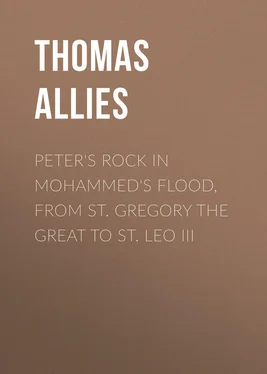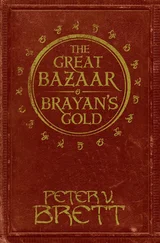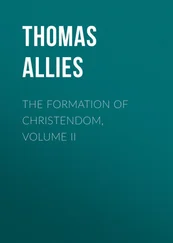Thomas Allies - Peter's Rock in Mohammed's Flood, from St. Gregory the Great to St. Leo III
Здесь есть возможность читать онлайн «Thomas Allies - Peter's Rock in Mohammed's Flood, from St. Gregory the Great to St. Leo III» — ознакомительный отрывок электронной книги совершенно бесплатно, а после прочтения отрывка купить полную версию. В некоторых случаях можно слушать аудио, скачать через торрент в формате fb2 и присутствует краткое содержание. Издательство: Иностранный паблик, Жанр: foreign_antique, foreign_prose, Историческая проза, на английском языке. Описание произведения, (предисловие) а так же отзывы посетителей доступны на портале библиотеки ЛибКат.
- Название:Peter's Rock in Mohammed's Flood, from St. Gregory the Great to St. Leo III
- Автор:
- Издательство:Иностранный паблик
- Жанр:
- Год:неизвестен
- ISBN:нет данных
- Рейтинг книги:4 / 5. Голосов: 1
-
Избранное:Добавить в избранное
- Отзывы:
-
Ваша оценка:
- 80
- 1
- 2
- 3
- 4
- 5
Peter's Rock in Mohammed's Flood, from St. Gregory the Great to St. Leo III: краткое содержание, описание и аннотация
Предлагаем к чтению аннотацию, описание, краткое содержание или предисловие (зависит от того, что написал сам автор книги «Peter's Rock in Mohammed's Flood, from St. Gregory the Great to St. Leo III»). Если вы не нашли необходимую информацию о книге — напишите в комментариях, мы постараемся отыскать её.
Peter's Rock in Mohammed's Flood, from St. Gregory the Great to St. Leo III — читать онлайн ознакомительный отрывок
Ниже представлен текст книги, разбитый по страницам. Система сохранения места последней прочитанной страницы, позволяет с удобством читать онлайн бесплатно книгу «Peter's Rock in Mohammed's Flood, from St. Gregory the Great to St. Leo III», без необходимости каждый раз заново искать на чём Вы остановились. Поставьте закладку, и сможете в любой момент перейти на страницу, на которой закончили чтение.
Интервал:
Закладка:
Peter's Rock in Mohammed's Flood, from St. Gregory the Great to St. Leo III
Prologue To The Seven Volumes Of The Formation Of Christendom
This work being from the beginning one in idea, I place here together the titles of the fifty-six chapters composing it. For each of these was intended to be complete in itself, so far as its special subject reached; but each was likewise to form a distinct link in a chain. The Church of God comes before the thoughtful mind as the vast mass of a kingdom. Its greatest deeds are but parts of something immeasurably greater. The most striking evidence of its doctrines and of its works is cumulative. Those who do not wish to let it so come before them often confine their interest in very narrow bounds of time and space. Thus I have known one, who thought himself a bishop, accept Wycliffe as the answer of a child to his question, Who first preached the Gospel in England? And not only this. They also seize upon a particular incident, or person, and so invest with extraordinary importance facts which they suppose, and which so conceived are convenient for their purpose, but in historical truth are anything but undisputed. In this tone of mind, or shortness of vision, that which is gigantic becomes puny, that which is unending becomes transient. The sequel and coherence of nations, the mighty roll of the ages spoken of by St. Augustine, are lost sight of. Again, in English-speaking countries alone more than two hundred sects call themselves Christian. Their enjoyment of perfect civil freedom and equality veils to them the horror of doctrinal anarchy, in virtue of which alone they exist. By this anarchy the very conception of unity as the corollary of truth is lost to the popular mind. But through the eight centuries of which I have treated, the loss of unity was the one conclusive test of falsehood, and the Christian Faith stood out to its possessors with the fixed solidity of a mountain range whose summit pierced the heaven.
It has been my purpose to exhibit the profound unity of the Christian Faith together with the infinite variety of its effects on individual character, on human society, on the action of nations towards each other, on universal as well as national legislation. Like the figure of the great Mother of God bearing her Divine Son in her arms, and so including the Incarnation and all its works, the Faith stands before us in history, “veste deaurata, circumdata varietate”. And as the personal unity appears in the symbol of the Divine Love to man expressed in her Maternity, so it appears also in the figure of the Church through the ages in which that Divine Love executes His work. A divided creed means a marred gospel and an incredulous world.
I offer this work as a single stone, though costing the labour of thirty years, if perchance it may be accepted in the structure of that Cathedral of human thought and action wherein our Crucified God is the central figure, around which all has grown.
Be it allowed me to quote here words of the present Sovereign Pontiff addressed on the 18th August, 1883, to the Cardinals de Luca, Pitra, and Hergenröther: —
“It is the voice of all history that God with the most careful providence directs the various and never-ending movements of human affairs. Even against man's intention he makes them serve the advancement of His Church. History says further that the Roman Pontificate has ever escaped victorious from its contests and the violence employed against it, while its assaulters have failed in the hope which they cherished, and have wrought their own destruction. Not less openly does history attest the divine provision made concerning the city of Rome from its very beginning. This was to give for ever a home and seat to the successors of St. Peter, from which as a centre, being free from all control of a superior, they might guide the whole Christian commonwealth. And no one has ventured to resist this counsel of the divine Providence without sooner or later perceiving the vanity of his efforts.
“It cannot be expedient, nor is it wise counsel, to fight with a power for whose perpetuity God has pledged Himself, while history attests the performance of the pledge. Since Catholics throughout the whole world pay it religious veneration, it is their interest to defend it with all their power. Nay even the rulers of secular governments must acknowledge this, and lay it to heart, especially in times so dangerous, when the very foundations on which human society rests appear well nigh to shake and totter.”
Preface
This volume is strictly in continuance of the two which it follows – “The Throne of the Fisherman built by the Carpenter's Son,” and “The Holy See and the Wandering of the Nations”. It is bulk alone which prevents my offering the three in one cover as historic proof, from original documents, of the first eight centuries that the Holy See by the institution of Christ is the Root, the Bond, and the Crown of Christendom. The works chiefly used in it are before and above all the letters of the Popes in their office of governing the Christian Commonwealth, which are contained in the great collection of Mansi, thirty-one volumes folio. The full titles of other works chiefly referred to are Cardinal Hergenröther, to whose work, Photius, Patriarch von Constantinopel, sein Leben, seine Schriften, und das griechische Schisma , and to his Handbuch der allgemeinen Kirchengeschichte , I owe great obligations – they are each in three volumes; Alfred von Reumont, Geschichte der Stadt Rom , in three volumes; Gregorovius, Geschichte der Stadt Rom , in eight volumes; Kurth, Les origines de la Civilisation moderne , in two volumes; Jungmann, Dissertationes , in seven volumes; the German edition of Rohrbacher's History, vol. x. by Rump, vol. xi. by Kellner; Hefele, Concilien-Geschichte , in seven volumes; Muratori, Annali d'Italia ; Brunengo, Le Origini della Sovranità Temporale dei Papi , and I primi Papi-Re e l'ultimo Re dei Longo-bardi ; F. von Hoensbroech, Enstehung und Entwicklung des Kirchenstaates ; Niehues, Kaiserthum und Papstthum , Döllinger, Muhammed's Religion, nach ihrer inneren Entwicklung und ihrem Einflusse auf das Leben der Völker . Regensburg, 1838.
Chapter I. The Pope And The Byzantine
I have hitherto conducted the history of the Throne of the Fisherman built by the Carpenter's Son in unbroken succession from St. Peter to St. Gregory the Great. It is a period of 575 years from the Day of Pentecost a. d. 29 to St. Gregory's death in a. d. 604. This period is very nearly bisected by the conversion of Constantine. The first half contains the action of the Primacy over against a hostile heathen empire. The second half contains its action upon an empire which, at least in principle, acknowledged union with the Catholic Church as a duty, a privilege, and a necessity. The testimony rendered by Councils and by Fathers to the Roman Primacy may be said to be complete in the time of St. Gregory. Subsequent Councils can only add a closer precision to the testimony of the Council of Chalcedon. Subsequent acts of the Eastern empire can scarcely go beyond the submission of its episcopate, its emperor, and its nobles to Pope Hormisdas. The point of that submission consists in the solemn acceptance of the line of Roman bishops as inheriting the charge given by our Lord to St. Peter. Subsequent legislation can but apply in detail the acceptance by Justinian of the Pope's right to examine everything which belongs to the doctrine or concerns the conduct of the Church throughout the world. And force is even added to this acceptance, because it was made when the Pope, John II., to whom it was made, was not in fact his temporal subject.
Читать дальшеИнтервал:
Закладка:
Похожие книги на «Peter's Rock in Mohammed's Flood, from St. Gregory the Great to St. Leo III»
Представляем Вашему вниманию похожие книги на «Peter's Rock in Mohammed's Flood, from St. Gregory the Great to St. Leo III» списком для выбора. Мы отобрали схожую по названию и смыслу литературу в надежде предоставить читателям больше вариантов отыскать новые, интересные, ещё непрочитанные произведения.
Обсуждение, отзывы о книге «Peter's Rock in Mohammed's Flood, from St. Gregory the Great to St. Leo III» и просто собственные мнения читателей. Оставьте ваши комментарии, напишите, что Вы думаете о произведении, его смысле или главных героях. Укажите что конкретно понравилось, а что нет, и почему Вы так считаете.












